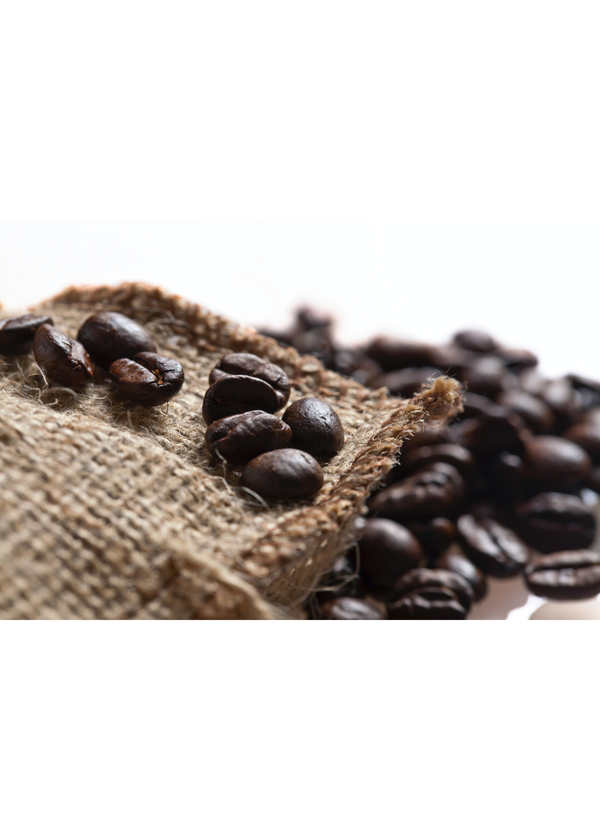If you've noticed that your coffee from the Keurig brewer seems watery, it can be a frustrating start to your day. A perfect cup of coffee is rich, flavorful, and refreshing, but when it turns out watery, it can leave you feeling unsatisfied.
Several factors could contribute to this issue, ranging from the coffee-to-water ratio, the brewing temperature, or even the coffee pod itself. Understanding why your coffee is coming out watery is essential to improving your brewing experience.
In this guide, we'll explore common reasons for watery coffee from a Keurig and provide practical solutions to help you achieve that perfect cup of joe.
What is K-Cup?
Before we dive into the reasons for watery coffee, let's first understand what a K-cup is. A K-cup is a single-serving pod used by Keurig brewers to make coffee. The cup contains ground coffee beans and a filter, making it convenient for users to brew a cup of coffee in just minutes.
K-cups come in various flavors and roasts, making it easy for coffee lovers to enjoy a variety of coffee options without having to purchase multiple types of ground coffee. Darker roast K-cups typically produce a bolder and more intense flavor, while lighter roasts offer a smoother and milder taste.
However, because the K-cups are pre-packaged, some factors could affect the strength and consistency of your brewed coffee. Coffee brewed from K-cups can be weaker or stronger than desired, depending on several factors.
Why Is My Coffee Watery From My Keurig?
Keurig coffee taste is subjective, and some people might prefer a weaker coffee while others want a strong cup. Weak coffee is often described as watery, and there are a few reasons why your coffee may turn out this way when using K-cups.
Coffee-to-Water Ratio:
The most common reason for watery coffee is using too much water in proportion to the amount of coffee used. Most Keurig brewers have preset cup sizes, and if you're not paying attention, it's easy to press the wrong button, resulting in a weaker brew.
To achieve a stronger taste, try using less water or opt for a smaller cup size setting on your Keurig machine.
Brewing Temperature:
Another factor that could contribute to watery coffee is the brewing temperature. When the brewing temperature is too low, it can affect the extraction process and result in a weak and watery brew.
To avoid this, make sure to use the right temperature setting on your Keurig brewer. If your machine doesn't have adjustable temperature settings, you can try preheating your cup before brewing or running an extra hot water cycle through the machine.
A Clogged Needle:
If you've been using your Keurig brewer for a while, the needle that punctures the K-cup could become clogged with coffee grounds. This can cause problems with water flow and result in a weak or watery brew.
To fix this issue, try cleaning the needle regularly by running hot water through it or using a paper clip to remove any debris. A K-cup coffee filter can also be used to prevent clogs in the first place.
Coffee Pod Quality:
The quality of the coffee pod itself can also play a significant role in the strength and consistency of your coffee. If the coffee pod is old or damaged, it may not extract properly, resulting in a weaker brew.
To ensure you're getting the best quality pods, always check their expiration dates and store them in a cool, dry place to maintain freshness. Additionally, consider investing in reusable K-cup pods to have more control over the coffee-to-water ratio and brewing temperature.
Not Enough Coffee Grounds In Reusable Filter:
If you're using a reusable filter with your Keurig brewer, make sure to add enough coffee grounds for the desired strength. Using too few grounds can result in a watery cup of coffee. Keurig coffee maker instructions usually recommend one to two tablespoons of coffee grounds per six ounces of water.
Using The Wrong Brew Setting:
Some Keurig machines have a "strong" or "bold" brew setting that is specifically designed for users who prefer a stronger cup of coffee. If your machine has this option, make sure to use it for a more robust and flavorful brew.
Old or Damaged K-Cups:
Finally, the quality of your coffee could be affected by old or damaged K-cups. Over time, the flavor and strength of coffee can decrease, especially if it's not stored properly. Additionally, a damaged K-cup can impact the brewing process and result in watery coffee.
To ensure a better brew, always check the expiration date on your K-cups and make sure they are stored in a cool, dry place.
Additional Factors To Consider:
Aside from the reasons mentioned above, there are a few other factors that could be contributing to your watery coffee. These include using low-quality water, not descaling your Keurig machine regularly, and not properly cleaning and maintaining your brewer.
To improve the quality of your coffee and avoid a weak or watery brew, make sure to use filtered water, descale your machine every few months, and follow the recommended cleaning and maintenance instructions for your specific Keurig model.
Solutions for Watery Coffee
Now that we've explored the common reasons behind watery coffee, here are some solutions to help you achieve a better brew from your Keurig machine:
- Pay attention to the coffee-to-water ratio and use less water for a stronger brew.
- Check the brewing temperature setting on your Keurig machine and adjust it if necessary.
- Regularly clean the needle of your Keurig brewer to ensure proper water flow.
- Invest in high-quality, fresh coffee pods or switch to reusable K-cup filters for more control over brewing strength and temperature.
- Double-check the number of coffee grounds used in a reusable filter to achieve the desired strength.
- Check the expiration date and proper storage of K-cups before use.
By following these solutions, you can enjoy a perfect cup of coffee every time from your Keurig brewer.
How to Make Stronger Coffee With a Keurig® Machine
For those who prefer a stronger cup of coffee, here are some tips on how to make your brew more robust with a Keurig machine:
- Use the "strong" or "bold" brew setting if available on your machine.
- Experiment with different K-cup flavors and roasts to find the one that suits your taste. Darker roasts tend to have a bolder flavor.
- Use a smaller cup size for a stronger brew.
- Consider investing in a reusable filter to have more control over the strength of your coffee.
- If using a reusable filter, try adding an extra scoop or two of coffee grounds for a stronger brew.
By implementing these tips, you can enjoy a stronger and more flavorful cup of coffee from your Keurig machine. Remember, the key to making a perfect cup of coffee is finding the right balance for your taste and preferences. If Keurig making watery coffee has been a recurring issue for you, try the solutions and techniques mentioned above to achieve a better brew every time.
How to Make Stronger Coffee With Reusable My K-Cup® Filter
For those who want more control over the strength of their coffee, using a reusable My K-Cup® filter is an excellent option. Here's how you can make your coffee stronger with this filter:
- Start by filling the filter with your desired amount of ground coffee.
- Place the filter in the Keurig machine and use a smaller cup size setting for a stronger brew.
- If the coffee is still not strong enough, add an extra scoop of grounds to the filter and try again.
- For even more control over the strength, consider using a reusable filter with adjustable settings or using a fine-ground coffee for a bolder flavor.
By following these steps, you can make your coffee as strong as you like with a reusable My K-Cup® filter. Remember to experiment with different ratios and settings until you find the perfect brew for your taste.
FAQs
Why is my K-cup coffee so weak?
There are several reasons why your K-cup coffee may be weak, including using too much water, not using the correct brew setting, or using old or damaged K-cups. It's important to pay attention to these factors and make adjustments as needed for a stronger cup of coffee.
What can coffee drinkers do to avoid watery coffee from their Keurig?
Coffee drinkers can avoid watery coffee from their Keurig by ensuring they're using high-quality, freshly ground coffee and adjusting the settings or methods to match their preferred strength. Experimenting with different reusable K-cup filters or considering pre-filled K-cups with bolder blends may also help in achieving a more satisfying coffee experience.
Why does my coffee from the Keurig seem watery?
If your coffee from the Keurig seems watery, it could be due to using a stale coffee blend. Freshly ground coffee often results in a richer flavor and stronger brew. Additionally, using too much water with the same amount of coffee grounds or using a reusable K-cup filter that's not suited for your coffee strength preference may dilute the taste.
What does it mean when coffee is weak?
Weak coffee refers to a brew that lacks intensity and flavor. Weak coffee refers to a brew that lacks intensity and flavor. Machine making weak coffee can be due to several factors such as using old or low-quality coffee grounds, not adjusting the brew settings, or not cleaning and maintaining the machine regularly.
Conclusion
In conclusion, the issue of watery coffee from a Keurig can often be attributed to several factors. Coffee enthusiasts must consider the quality and freshness of the coffee grounds used, as stale coffee may result in a lackluster brew. Moreover, the choice of a suitable reusable K-cup filter plays a significant role in ensuring proper extraction and preventing dilution of the coffee.
Adjusting the grind size and experimenting with brewing parameters on the Keurig can also lead to a more satisfying coffee experience. By paying attention to these details and making informed choices, coffee lovers can elevate their at-home brewing and relish in the rich, flavorful cups of coffee they crave.







